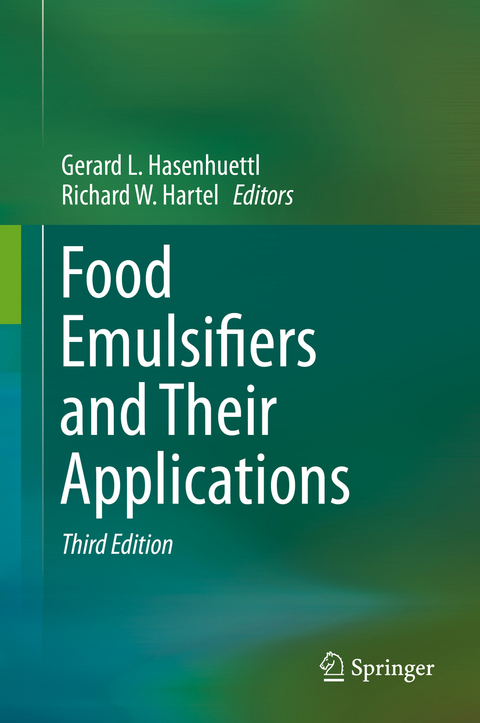
Food Emulsifiers and Their Applications
Springer International Publishing (Verlag)
978-3-030-29185-3 (ISBN)
Emulsifiers, also known as surfactants, are often added to processed foods to improve stability, texture, or shelf life. These additives are regulated by national agencies, such as the FDA, or multi-national authorities, such as the EEC or WHO. The amphiphilic molecules function by assisting the dispersion of mutually insoluble phases and stabilizing the resulting colloids, emulsions, and foams.
Emulsifiers can interact with other food components such as carbohydrates, proteins, water, and ions to produce complexes and mesophases. These interactions may enhance or disrupt structures and affect functional properties of finished foods. In dairy processing, small molecule emulsifiers may displace dairy proteins from oil/water and air/water interfaces, which affects stability and properties of the foams and emulsions. In baked products, emulsifiers contribute to secondary functionalities, such as dough strengthening and anti-staling.
Synthetic food emulsifiers suffer from the stigma of chemical names on a product's ingredient statement. Modern consumers are seeking products that are "all natural." Fortunately, there are a number of natural ingredients that are surface-active, such as lecithin, milk proteins, and some protein-containing hydrocolloids. Mayonnaise, for example, is stabilized by egg yolk. This book can serve as both a guide for professionals in the food industry to provide an understanding of emulsifier functionality, and a stimulus for further innovation. Students of food science will find this to be a valuable resource.
Gerard L. Hasenhuettl is a consultant in Port Saint Lucie, Florida. Richard W. Hartel is a Professor of Food Engineering in the Department of Food Science at the University of Wisconsin-Madison, Madison, WI.
Chapter 01. Overview of Food Emulsifiers.- Chapter 02. Synthesis and Commercial Preparation of Food Emulsifiers.- Chapter 03. Analysis of Food Emulsifiers.- Chapter 04. Emulsifier-Carbohydrate Interactions.- Chapter 05. Protein/Emulsifier Interactions.- Chapter 06. Physicochemical Aspects of an Emulsifier Function.- Chapter 07. EMULSIFIERS IN DAIRY PRODUCTS AND DAIRY SUBSTITUTES.- Chapter 08. Emulsifiers in Infant Nutritional Products.- Chapter 09. Current Emulsifier Trends in Dressings & Sauces.- Chapter 10. Applications of Emulsifiers in Baked Foods.- Chapter 11. Emulsifiers in Confectionery.- Chapter 12. Emulsifier Applications in Meat Products.- Chapter 13. Margarines and Spreads.- Chapter 14. Application of Emulsifiers to Reduce Fat and Enhance Nutritional Quality.- Chapter 15. Guidelines for Processing Emulsion-Based Foods.- Chapter 16. Future Trends of Emulsifiers and Other Food Ingredients.
| Erscheinungsdatum | 22.11.2019 |
|---|---|
| Zusatzinfo | X, 522 p. 148 illus., 26 illus. in color. |
| Verlagsort | Cham |
| Sprache | englisch |
| Maße | 155 x 235 mm |
| Gewicht | 955 g |
| Themenwelt | Naturwissenschaften ► Biologie ► Mikrobiologie / Immunologie |
| Naturwissenschaften ► Chemie ► Physikalische Chemie | |
| Technik ► Lebensmitteltechnologie | |
| Schlagworte | Dairy proteins • food additives • Food emulsifier • Reduced fat • Surfactant |
| ISBN-10 | 3-030-29185-5 / 3030291855 |
| ISBN-13 | 978-3-030-29185-3 / 9783030291853 |
| Zustand | Neuware |
| Haben Sie eine Frage zum Produkt? |
aus dem Bereich


